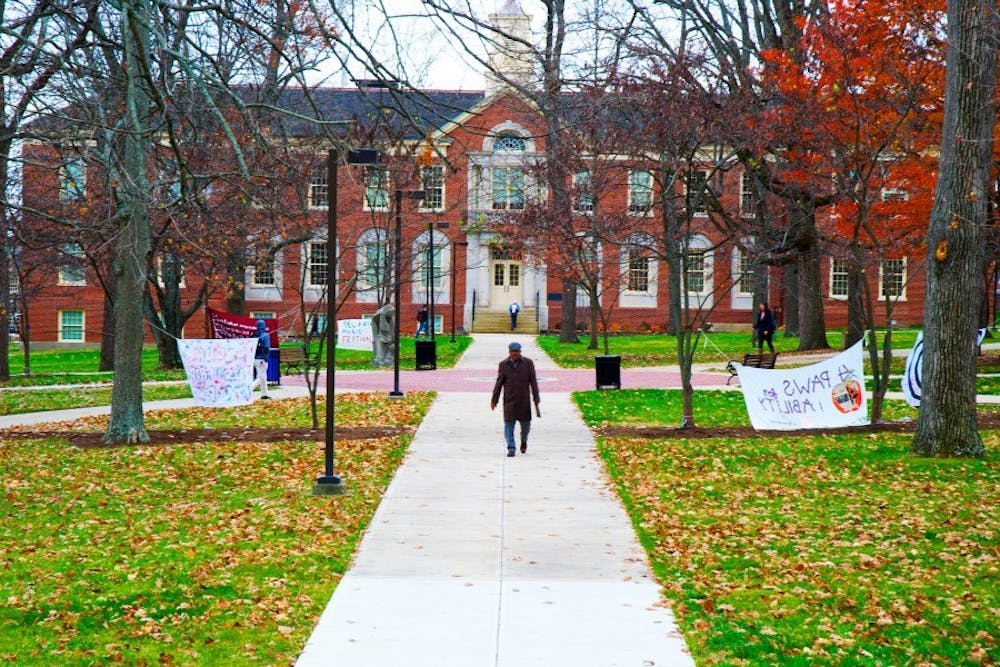By David Shoemaker
Like my 500 peers who studied abroad during Miami University's winter term, I got the chance to escape the Midwest's cold in order to experience a new region. Although I wasn't formally studying and I didn't have to leave the country, my time in Miami, Florida, on the Office of Diversity Affairs' immersion trip into Latin fusion culture was an experience like none other.
Besides spending some time in South Beach and Little Havana, we had the pleasure of visiting the "other" Miami.
Yes, this is the one that all our relatives and friends thought we were going to when we told them, "I'm attending Miami University." And, yes, this is the one with the good football team and the warm weather.
So, while walking around The University of Miami, or colloquially known as "The U," I wondered what kind of similarities and differences existed between the two prestigious universities (besides an ongoing verbal jest about which school is the true Miami).
Without having to use Google images, I can tell you from my brief visit that no red brick buildings or pine trees exist anywhere on its campus. In fact, the modern style white stucco buildings against a Spanish moss and palm tree façade reminded me that not all academic buildings have to resemble a 19th century mansion.
Here's what I learned.
The Redhawks' home is a public university with close to 16,000 undergraduate students. The Canes' home is a private university with a little over 11,000 undergraduate students.
From an academic standpoint, U.S. College & News ranks Miami (OH) at #76 in the National Universities category while The U comes in at #48. At Miami (OH), 39 percent of the undergraduate student body was in the top 10 percent of their high school class. With an acceptance rate of 38 percent, compared to Miami's (OH) 67 percent, it's no wonder that 66 percent of The U's undergraduate student body was in the top 10 percent of their high school class.
Though Miami (OH) may fall behind in these categories, we achieve at the highest-level possible when considering our annual endowment and our status as a public university. With an endowment $200 million less than The U and an annual budget of which the Ohio state government funds only 9.2 percent, Miami (OH) must uphold its prestigious reputation without raising tuition to The U's $44,350 a year price tag. Considering our ranking as the most efficient university in the country and the best undergraduate education at a public university, you could say we're ballin' on a budget.
From a purely academic level, we're more similar than I thought. However, The U has succeeded in something we haven't. Like the city of Miami, The U is one of the most racially and economically diverse universities in the country. While their white student population is half of ours, 73 percent of all students receive some type of financial aid, incidicating class and racial interaction that lacks at Miami (OH).
In the past 25 years, The U has rebranded their image of a "thuggish" football school in a crime-ridden city to become a mecca for high achieving students of all backgrounds. Since 1993, The U has seen the number of freshman applications explode from 7,122 to 31,607. In these same 25 years, The U drastically increased its diversity and rank in national publications.
Enjoy what you're reading?
Signup for our newsletter
As the U.S. workforce becomes more diverse, a more diverse Miami (OH) only prepares students for working with people of all backgrounds on a daily basis.
Coming from a predominantly white middle-class suburb of Pittsburgh, no one had ever heard of Miami (OH) when I told them where I was going to school. If I did meet someone who recognized the name, I usually heard "Oh, that's where Big Ben went!"
I never thought about it until now, but exactly where and how are we finding our prospective students? Is our name known in all neighborhoods, regardless of race or class? Or have we allowed our image to be one that attracts affluent students from the suburbs of Chicago who come here to party?
Yes, I know we don't have anything close to the city of Miami's ethnic diversity in Ohio, but we should let our impressive rankings speak for themselves. To truly increase diversity while maintaining academic excellence, our name must be in the minds of every high achieving student of color in the Midwest.
Once our name is out there, we must create an image that attracts students of all backgrounds and makes them feel as if Miami (OH) could become a second home.
Racist reactions on social media to student protests and a xenophobic attitude towards our international students is not the image we want. However, with support from faculty, the student body and administration, we can combat hate and create an image that is inclusive and supportive.
As our namesake in Florida has exemplified, it is possible to create a name and establish a new image within a couple of decades.
Above all, The U teaches us that academic excellence and racial diversity can be achieved simultaneously.




